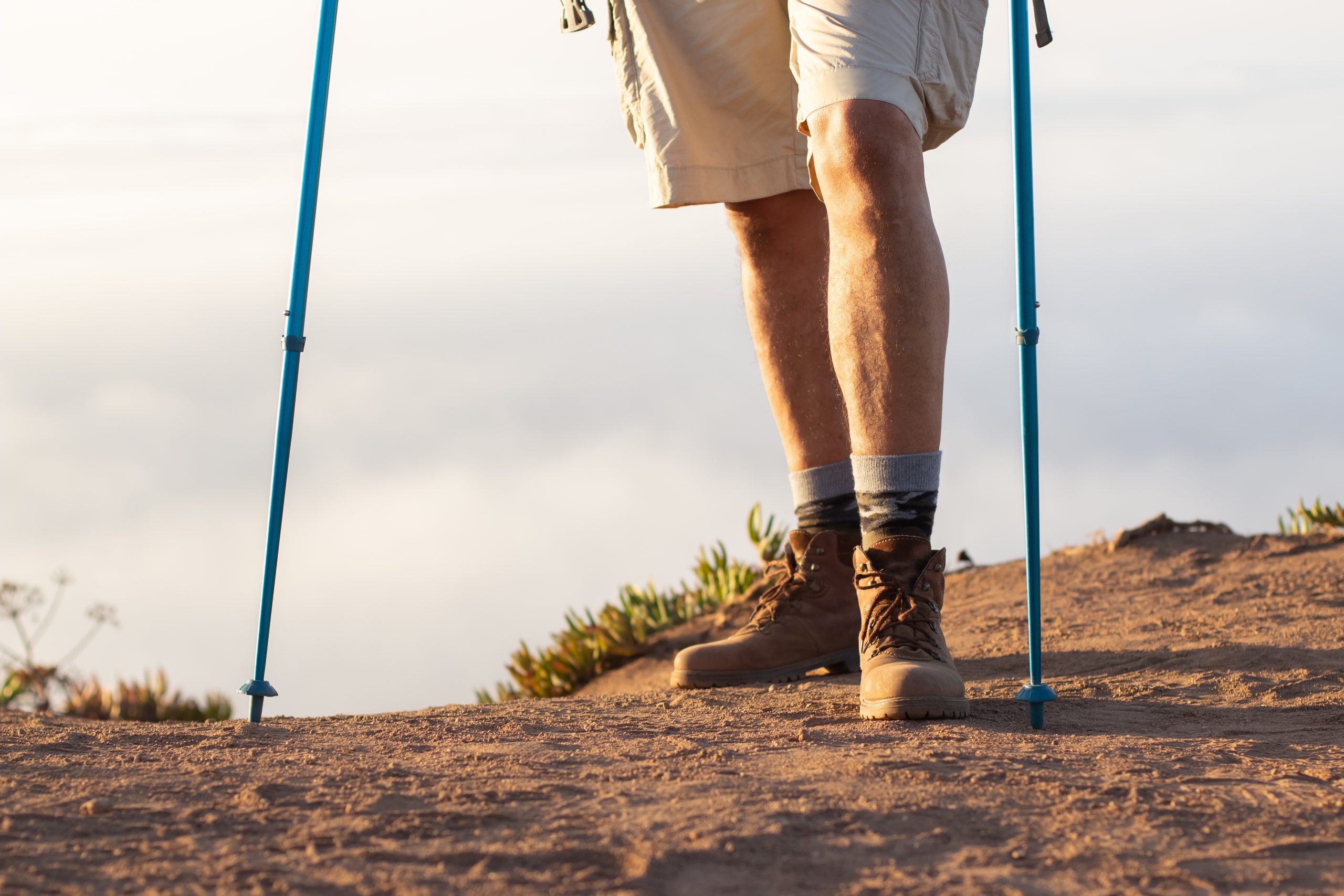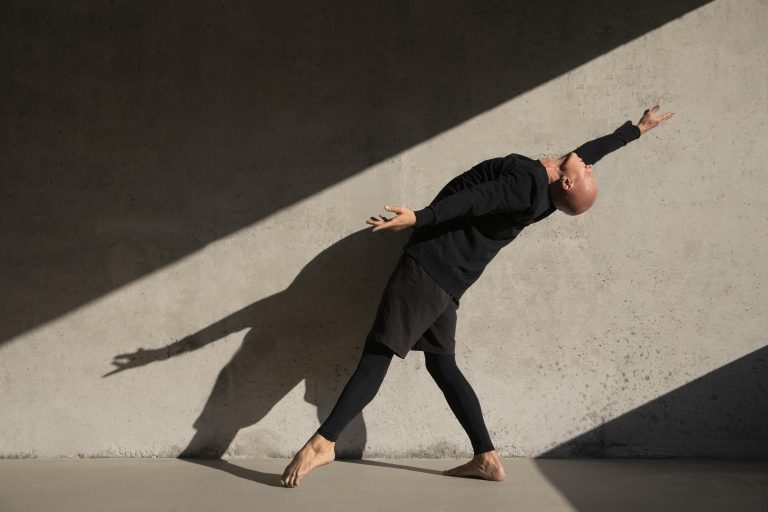In the summer of 2000, I encountered a strange sight on Medve-hegy, a hiking spot near New York, when the people getting out of the car that parked next to me were carrying ski poles. I didn’t understand where they intended to go cross-country skiing in the middle of a heatwave. I looked into it and got to know a new sport—Nordic walking, or “Northern walking,” as it is called.
Nordic walking is a type of walking similar to cross-country skiing, using poles resembling those used in skiing. A few years later, I found a sports organization in Hungary specialized in this sport and cross-country skiing, where professional instructors taught me the proper use of the poles. For 17 years, I’ve been regularly attending 2-3 Nordic walking training sessions per week, each lasting two hours, with this team. After initial clumsiness, by the end of the third session, I was already handling the Nordic walking poles confidently, which have since become almost an extension of myself—I use them during workouts, family hikes, and friendly walks in the forest. In the first few months, reaching some of the higher peaks in the Buda Hills was quite challenging; I would get out of breath and experience muscle soreness. Over time, my fitness gradually improved to the point that I embarked on high-altitude treks in the Alps in Austria and Slovenia, the mountains of Montenegro and Bulgaria, and the High Tatras. Two years ago, I completed a Nordic walking instructor course and now lead training sessions myself. I am 72 years old, don’t struggle with serious illnesses, and although my pace has slowed slightly, I have no musculoskeletal issues. I firmly believe that Nordic walking plays a fundamental role in maintaining my health.
Nordic walking training takes place in nature, around Normafa and the surrounding hills. Alongside the benefits offered by the sport, we enjoy the beauty of the mountains, the forest, and observe the changing seasons. There’s no such thing as bad weather—only inappropriate clothing and gear. We go out whether it’s raining, snowing, or windy. Over the years, my fellow participants have formed a friendly community. The age range of the group is wide, from people in their 40s and 50s to those over 70. The trainers’ task is to find the right route and pace for everyone during the sessions.
In recent years, several of us have gone through various health challenges and returned to the workouts after recovery; in many cases, Nordic walking even supported their rehabilitation. Based on scientific literature, expert insights, and our own experiences, I will summarize how Nordic walking impacts health.
The Health Benefits of Nordic Walking
Nordic walking has numerous positive effects on health—it’s an excellent full-body workout that is gentle on the joints. Here are the key health benefits:
Cardiovascular System Support
- Improves heart and circulatory function.
- Lowers blood pressure.
- Helps normalize cholesterol levels.
Muscles and Musculoskeletal System
- Works the upper body muscles (arms, shoulders, back), not just the legs.
- Protects the joints, especially the knees and hips.
- Enhances posture and coordination.
- Strengthens bones while being gentler on the joints compared to running.
Weight Loss and Metabolism
- Burns more calories than regular walking (approximately 20-40% more).
- Assists in weight loss and boosts metabolism.
Mental Health
- Reduces stress and anxiety.
- Stimulates endorphin production, improving mood.
- Particularly beneficial for mental well-being when done outdoors.
- The alternating arm and leg movement engages both brain hemispheres, which has a highly positive effect on the nervous system.
Ideal for Older Adults
- Safe and easy to learn.
- Helps prevent falls thanks to its balance-improving effects.
- Boosts overall endurance and vitality.
- Suitable for anyone at any age. During Nordic walking, the synchronization of the brain hemispheres supports safer movement in older age. It also slows cognitive decline.
Nordic Walking as an Outdoor Sport
- While Nordic walking, you can enjoy the beauty of nature, the forest—the best “gym” imaginable.
- Natural terrain is softer than asphalt, better for feet, hips, and the spine.
- Fresh air supports respiratory and circulatory function, improves oxygen supply. Sunlight promotes vitamin D production.
- Exercising under the open sky strengthens the immune system.
The Role of Nordic Walking in Rehabilitation
Nordic walking can be effectively integrated into rehabilitation programs and supports recovery in various ways.
Joint-Friendly Exercise
- The use of special poles engages the upper body, strengthening deep back muscles crucial for spinal support. Proper pole use improves posture and alleviates chronic pain in the shoulder and neck areas that may have persisted for years.
- Naturally strengthens the legs while being less taxing on the body compared to running.
- Ideal for rehabilitation after knee or hip replacement surgery.
Full-Body Workout with Gradual Load
- Activates muscles in both the upper and lower body, gradually increasing intensity.
- Improves muscle strength and endurance without excessive strain.
Balance and Coordination Improvement
- The symmetrical and rhythmic movement aids in restoring coordination and proprioception (body awareness).
- Beneficial for patients recovering from strokes or living with Parkinson’s disease.
Cardiovascular Rehabilitation
- A low-intensity yet effective exercise that can be safely performed by heart patients under medical supervision.
- Improves peripheral circulation and reduces the risk of thrombosis.
Mental and Psychological Support
- Outdoor exercise improves mood and relieves tension.
- Motivating and often performed in groups, aiding social reintegration.
Examples Where It Can Be Effective:
- After orthopedic surgeries (e.g., hip or knee replacements)
- Following spinal surgery or for spinal issues
- In cardiac rehabilitation
- For neurological conditions (e.g., MS, Parkinson’s, stroke recovery)
- For individuals with diabetes
- To improve general fitness in older adults
How to Get Started with Nordic Walking?
If you’re interested, your first step shouldn’t be buying poles. The size and quality of the poles matter, and it’s important to learn how to use them properly.
I often see older people walking with Nordic poles in the streets, using them more as walking sticks for support rather than for exercise. While they provide some relief from joint strain and help maintain balance, it’s unfortunate that they don’t realize learning proper technique from trained instructors could multiply these benefits and make the activity enjoyable. Poor pole grip and posture can lead to negative outcomes.
My advice:
- Join a Nordic walking group led by a certified NW instructor/trainer.
- Learn the correct pole technique during training sessions.
- The instructor/trainer will advise you on the right pole size and quality for you; you’ll usually have access to poles during training and can borrow them later.
- Once you’ve decided to practice regularly, purchase your own poles based on these recommendations.
- It’s crucial to wear appropriate, comfortable footwear: walking shoes, hiking shoes, or boots for mountainous terrain.
Where and How to Practice Nordic Walking?
- Once you’ve mastered the basics, you can walk alone, but it’s better with friends, companions, or family members.
- A 1-2 hour Nordic walking session is like having coffee/tea with friends—you can have great conversations along the way. Occasionally take 5-10 minute breaks from chatting and increase your pace—it should leave you a bit breathless!
- It’s advisable to warm up for 5 minutes before and stretch for 5 minutes after Nordic walking to prevent injuries.
- Nordic walking is an outdoor sport. While it’s possible to walk on city streets, it’s not recommended due to poor air quality and hard surfaces like asphalt or concrete. Don’t forget to put rubber tips on your poles when walking on asphalt!
- In the city, head to parks where the air is fresher and the greenery creates a pleasant environment.
- The best terrain is natural surroundings: fields, mountains, forests, where the air is clean, the ground soft, and the scenery beautiful.
- Nordic walking poles are also useful—and recommended—during hikes.
Refrences:





